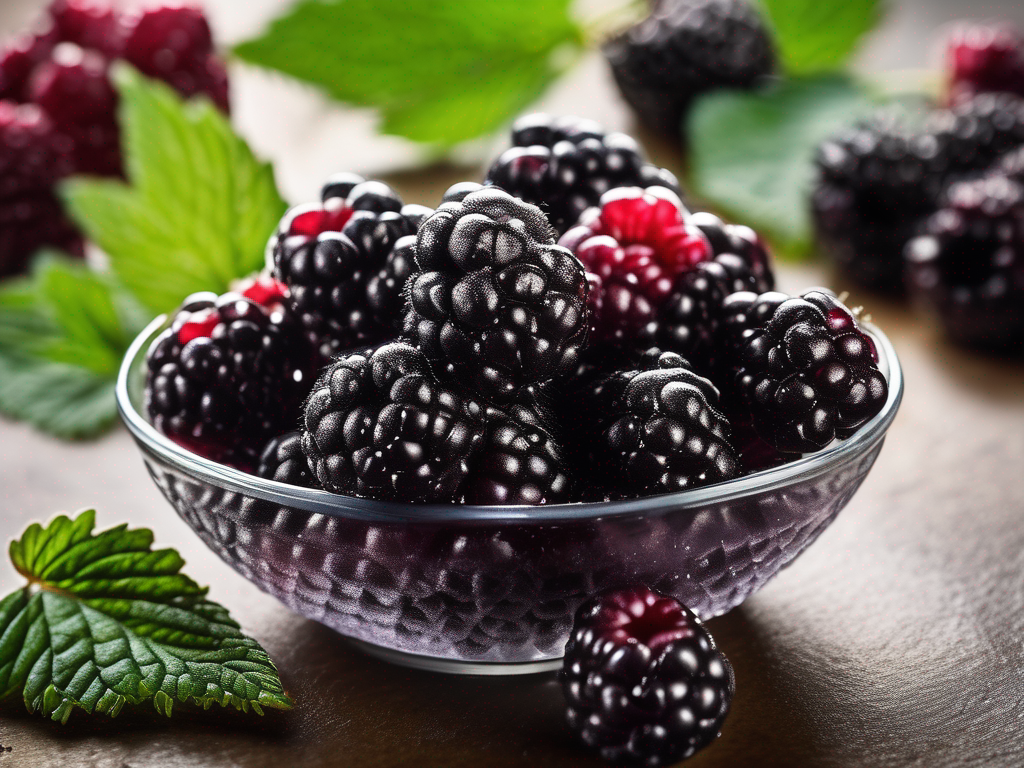
How to Properly Store Frozen Blackberries for Long-Lasting Freshness
Get Your Free Food Safety Cheat Sheet
30 most common foods with instant answers. Print it and stick it on your fridge—completely free!
How to Properly Store Frozen Blackberries for Long-Lasting Freshness
Frozen blackberries are a versatile and delicious fruit that can be enjoyed in a variety of recipes. Whether you picked them fresh or bought them from the store, proper storage is essential to maintain their flavor and quality. In this blog post, we will discuss the best practices for storing frozen blackberries to ensure they stay fresh for an extended period. (Frozen blackberries)
Why Proper Storage Matters
Properly storing frozen blackberries is crucial for several reasons:
- Preserve Freshness: Correct storage methods help retain the flavor, texture, and nutritional value of the blackberries.
- Prevent Freezer Burn: Improper storage can lead to freezer burn, which can negatively impact the taste and quality of the fruit.
- Avoid Contamination: By following safe storage practices, you can prevent contamination and foodborne illnesses.
Step-by-Step Guide to Storing Frozen Blackberries
1. Preparing the Blackberries
Before freezing the blackberries, it's essential to wash and dry them thoroughly. Follow these steps:
- Wash the blackberries: Rinse the blackberries under cold running water to remove any dirt or debris.
- Dry the blackberries: Gently pat the blackberries dry with paper towels or a clean kitchen towel.
2. Packaging the Blackberries
Proper packaging is key to maintaining the quality of frozen blackberries. Here's how to do it:
- Use airtight containers: Transfer the washed and dried blackberries to airtight containers or resealable freezer bags.
- Remove excess air: Squeeze out any excess air from the bags before sealing them to prevent freezer burn.
3. Labeling and Dating
To keep track of the storage time and contents, label and date the containers or bags:
- Label the containers: Write "Frozen Blackberries" on the containers or bags.
- Date the containers: Write the date of freezing on the labels to track the storage time.
4. Freezing the Blackberries
When freezing the blackberries, follow these guidelines:
- Spread them out: Arrange the blackberries in a single layer on a baking sheet before placing them in the freezer. This prevents them from clumping together.
- Store at the right temperature: Set the freezer temperature to 0°F (-18°C) or lower for optimal storage conditions.
Tips for Maintaining Frozen Blackberries
Here are some additional tips to ensure the long-lasting freshness of frozen blackberries:
- Rotate stock: Use the oldest blackberries first to maintain freshness.
- Avoid thawing and refreezing: Thawed blackberries should not be refrozen as it can affect their texture.
- Store away from odorous foods: Keep frozen blackberries away from foods with strong odors to prevent flavor transfer.
Conclusion
Properly storing frozen blackberries is essential for preserving their taste and quality. By following the steps outlined in this guide, you can enjoy flavorful blackberries in your favorite dishes throughout the year. Remember to label, date, and package the blackberries correctly to ensure they stay fresh for an extended period. [Frozen blackberries](/food/frozen blackberries) are a delicious addition to your pantry, so make sure to store them properly to enjoy them at their best. (Frozen blackberries)
Related Posts
Here are some other articles you might find helpful:
Authoritative Food Safety References
These agencies and university labs inform every tip and health precaution we publish.
USDA FoodKeeper – Cold Storage Guidelines
Official refrigerator, freezer, and pantry timelines maintained by the U.S. Department of Agriculture.
Visit USDA FoodKeeperFDA Produce Safety Rule & Grower Guidance
Field-to-fridge handling practices that prevent contamination of fruits, vegetables, and leafy greens.
Visit FDA Produce SafetyCDC Foodborne Illness Prevention Hub
Surveillance-backed guidance on pathogens, symptoms, and steps to reduce foodborne illness risk.
Visit CDC Food SafetyUC Davis Postharvest Technology Center
University research detailing optimal storage atmospheres for produce after harvest.
Visit UC Davis PostharvestPenn State Extension – Home Food Preservation & Safety
Peer-reviewed extension bulletins on safe canning, chilling, and reheating practices.
Visit Penn State ExtensionGet Your Free Food Safety Cheat Sheet
30 most common foods with instant answers. Print it and stick it on your fridge—completely free! Want more? Upgrade to the complete guide with 70+ foods.
Scan your food directly and get instant safety info using our AI-powered camera feature.